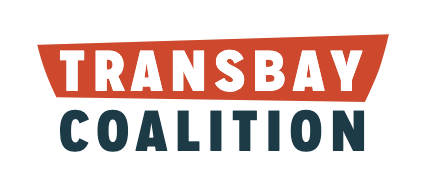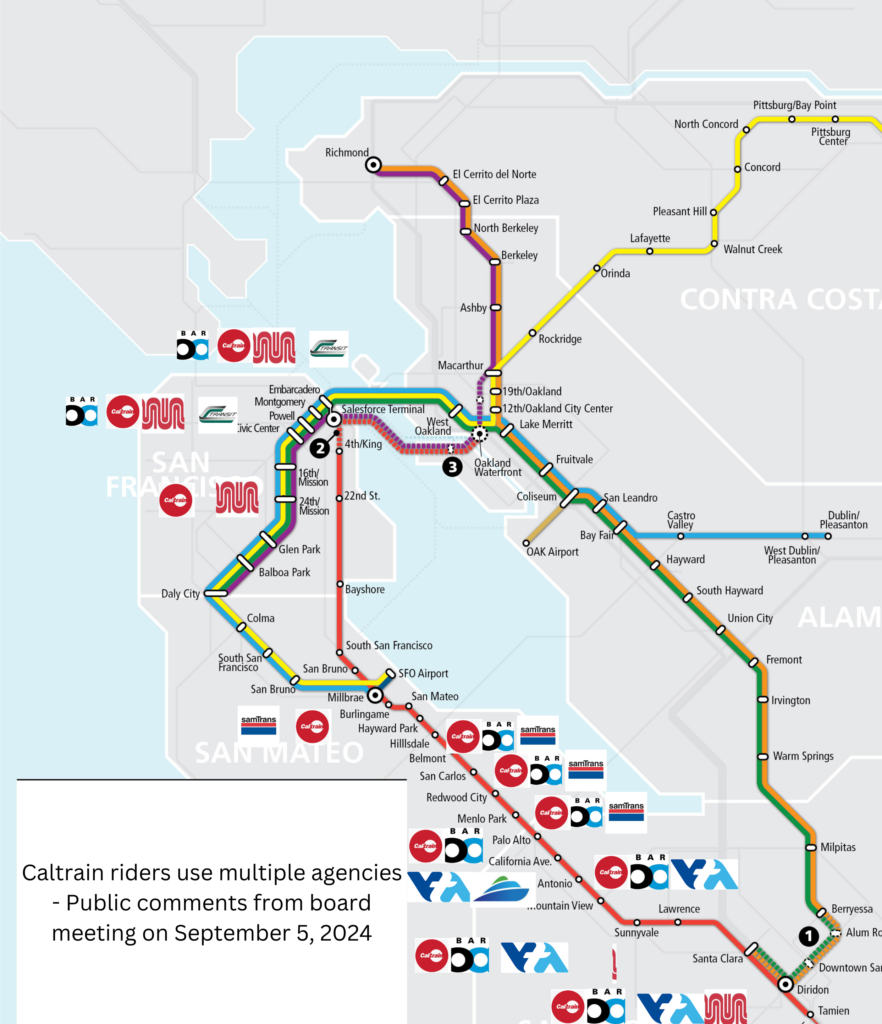At Caltrain’s board meeting on Thursday September 5 (and meetings at SamTrans and VTA last week), board members grappled with the issues around regional transit funding and solutions being proposed in a regional process with the Metropolitan Transportation Commission, legislators, and other stakeholders.
At the Caltrain board meeting, about two dozen riders from all three Caltrain counties told personal stories about using multiple agencies – Caltrain, and BART and SamTrans and VTA and Muni and other agencies.
Riders consistently urged agencies to work with MTC to craft solutions for a regional funding measure that would fully fund Caltrain with funds from all three counties, and that would maintain, improve, and coordinate a multi-agency system.

Board members at SamTrans and Caltrain grappled with gaps in the initial options proposed by MTC.
* A smaller, $540 million 4-county option would nearly fully fund Caltrain by replacing lost fare revenue, but would leave Santa Clara County out of the measure, which SamTrans board members understandably cited as unfair.
* A larger $1.5 billion 9-county option provides enough funding to maintain and coordinate the region’s transit service. However, the proposal by MTC inexplicably appears to fund only half of Caltrain’s funding need.
In response, agency board members understandably wanted to ensure that there were backup options to fund Caltrain, and expressed worry about the region’s ability to create a regional solution in time for the 2025 legislative session.
Some board members preferred solutions where each agency held separate ballot measures, and/or each county held separate ballot measures, funding multi-county agencies with bi-directional agreements.
Prior to Measure RR, this is how Caltrain was funded, and that process led to financial crises and proposals for service cuts every several years, when one agency or another had local financial challenges and couldn’t pay, or had unresolved negotiations with partner agencies. This is an unstable system that does not enable households, cities, and employers to plan around a reliable transit system.
Some board members and staff at SamTrans also expressed concern about the county making any further contributions to BART. A 2007 agreement between SamTrans and BART was intended to be permanent – but the pandemic changed many things, including public funding needs for Caltrain and for BART.
Staff noted that BART stations are located only in the North part of San Mateo county. However, multiple riders in public comment said that they use Caltrain and BART (and other agencies), living in cities further south on the Corridor. BART accounts for 60% of rail ridership and 40% of transit ridership in San Mateo County. If BART failed, congestion would impact the 101 and 280 highways for drivers throughout the county.
Staff also observed that a ballot measure to extend BART down the 101 corridor had failed in 1999, and that the extension to San Mateo County was led by San Francisco and controversial at the time in San Mateo.
Staff and board members spoke about the need for polling to test voters’ appetite for various options. It would be valuable to test the hypothesis about whether voters’ opinions in 2024 are more like voters’ opinions in 1999 about extending BART down highway 101 or like the public commenters who want to keep and coordinate multi-agency transit system.
At the VTA board meeting, Chair Chavez said that it was important to Santa Clara County to support service for Caltrain and BART, and that she and Mayor Mahan were participating in a subcommittee working on solutions that could work for Santa Clara County.
The next few months will be critical, and it will continue to be important for riders to make our voices hear in the decisions.

